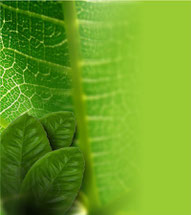
Topic III: Macromorphological characteristics of vegetative organs
Stem
What is the stem?
The stem is the structure of the plant that holds the leaves and leads the water upward through their vascular bundles by a system called xylem and downward by the phloem. Both bundles reach the leaves where they are called nerves.
Stems types
Most frequent stems types are aerial, upright and elongated, although in some plants presents a heavily modified structure.
There are plants whose stem (or stems) are underground such as the rhizomes (lily) and the tubers (potato).
Stem function
The stem main function is to form and hold the leaves and keep reproductive structures, lead nutrients and water and store food substances.
Stem parts
The points of the stem where leaves and buds sprout are called nodes, and the space between two nodes, internodes.
The outer layer of the stem herbaceous plants is called the epidermis.
Some stems have in between the xylem and phloem a thin cells layer called the cambium.As the stem grows new layers are formed by dying cell layers, creating a protective layer
called cork, replacing dead epidermal layers.
The trees bark is a complex outer tissue formed by phloem and cork.
The herbaceous stems, which lack of woody tissue, acquire structural resistance by other means. Thus, bamboo, who is not formed by wood, must its resistance to the presence of numerous fibers in the stem.

 Pharmacognosy´s topics - Medicinal plants
Pharmacognosy´s topics - Medicinal plants


Write a comment